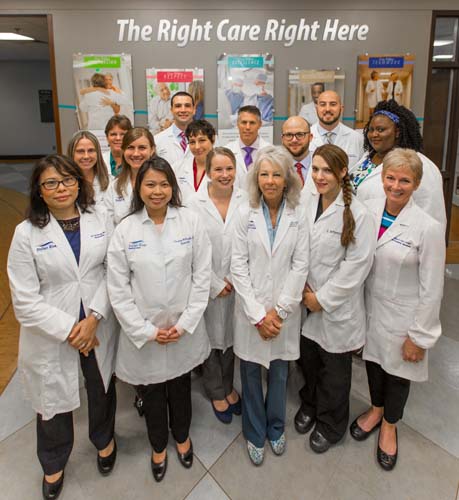
If Dr. Richard Rothman has his way, your family doctor will now have a new title.
For decades family doctors were commonly called “general practitioners.” That name slowly evolved into “primary care physicians,” but Rothman, the tall and decidedly youthful-looking chairman and director of the Indian River Medical Center’s department of hospital medicine – and its two dozen “hospitalists” – seems intent on changing that name again.

Dr. Richard Rothman. Staff photos: Denise Ritchie
Rothman consistently refers to family physicians as “outpatient providers.”
It is true that the days of Marcus Welby-like general practitioners coming to visit their patients and manage their care while they are in the hospital are rapidly disappearing, but whether or not calling the family doctor “an outpatient provider” will catch on with anyone other than Rothman’s fellow hospitalists remains to be seen.
Nevertheless, hospitalists like Rothman now rule the roost inside three out of four U.S. hospitals. One reason for that is that most primary care physicians – or outpatient providers – simply do not have time to see patients who have been admitted to a hospital.
Indeed, the Annals of Internal Medicine says, “for every hour spent with patients, primary care physicians spend two hours on health records and desk work.”
That doesn’t leave much time for driving to hospitals and visiting with patients.
“When you look at the hospital medicine model,” says Rothman, “it’s one that dichotomizes care by nature of specialty. You have physicians in the outpatient setting that take care of only outpatients and you have physicians in the inpatient setting that only take care of inpatients.”
The dichotomy has benefits in terms of efficiency but it also puts hospitalists like Rothman at a certain disadvantage. Their “inpatient” patients don’t know them from Adam. And they don’t have any longstanding personal connections to the patient, either – which means they don’t have firsthand knowledge of the patient’s family or medical history.
The New England Journal of Medicine, in a September 2016 article, cautions that the “increasing reliance on hospitalists entails a number of risks and costs for everyone involved in the healthcare system … As the number of physicians caring for a patient increases, the depth of the relationship between patient and physician tends to diminish – a phenomenon of particular concern to those who regard the patient-physician relationship as the core of good medical care.”
Earning a patient’s trust – as well as learning how to effectively communicate with that patient’s primary care physician – hasn’t always been an easy task for ‘hospital medicine’ practitioners, but Rothman enthusiastically claims progress is being made.
While Rothman freely admits he and his team of some 25 other hospitalists at IRMC frequently do have to explain who they are and what they do, in the two decades since the term “hospitalist” was first coined, they’ve learned at least a handful of ways to make that task a little easier.
It might start with a business card that includes a photo of the attending hospitalist as well as the recitation of a memorized speech which, Rothman says, might just sound something like this: “My name is Dr. Rothman. I’m a hospital medicine provider. What that means is I only take care of patients in the hospital and I’ll be your primary care physician throughout your hospital stay.”
As far as keeping the patient’s primary care doctor up to speed, hospitalists rely on tools developed under President Obama’s Affordable Care Act which, for the first time ever, mandated the use of EMRs, or electronic medical records.
EMRs allow hospitalists to see a written version of their inpatient-patient’s medical history as well as a complete list of any prescribed medications he or she may be taking.
Building on that system, Rothman explains, hospitalists can now automatically contact the patient’s primary care doctor, letting him or her know the patient has been admitted to the hospital. The system even allows the hospitalist to see when that message is read.
And, says Rothman, when a patient is discharged from the hospital, another message that includes a summary of the patient’s treatment is sent to their primary care provider.
“The majority of our patients are leaving with appointments to see their outpatient provider for follow-up exams” already booked, Rothman adds.
Becker’s Hospital Review says that “today there are more than 50,000 hospitalists in the U.S.,” and Rothman points out that he and his team of hospitalists “take care of about 85 to 90 percent of patients who are admitted” to IRMC.
Not surprisingly the Society of Hospital Medicine touts this new specialty as helping to lower costs and reduce the length of patient stays, as well as improving patient outcomes and reducing hospital readmission rates.
Dr. Richard Rothman is the director of the Indian River Medical Center’s department of hospital medicine.



